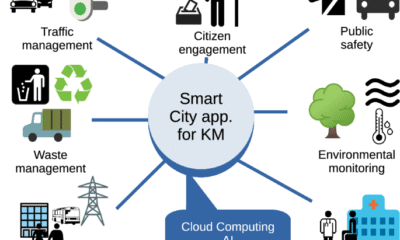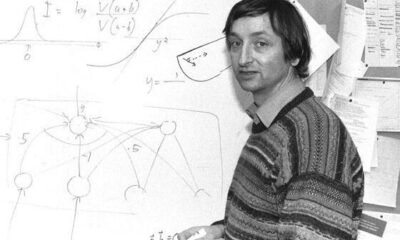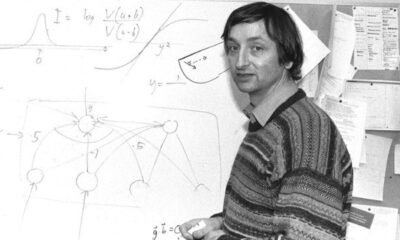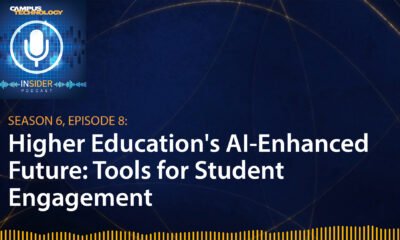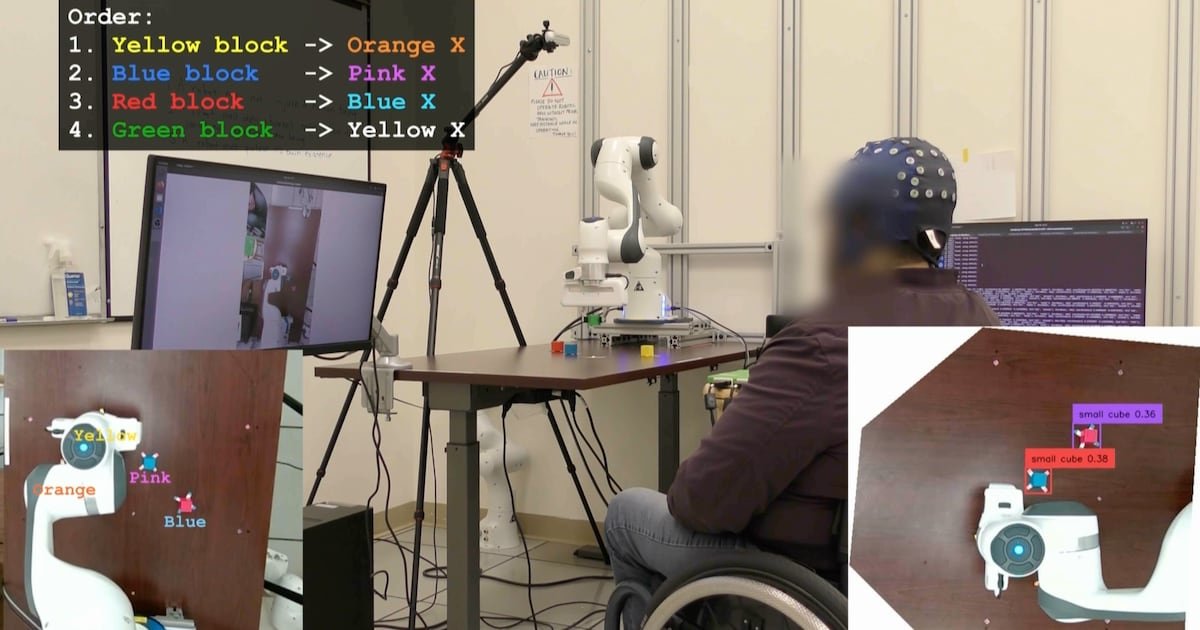AI Research
Can we trust AI? Researchers offer framework for tackling this question

An international team of researchers has put forward a framework that it argues can be used to answer one of the biggest questions facing artificial intelligence (AI) technologies: can AI be trusted? The framework offers an organized approach for tackling a complex subject that draws on a wide variety of research disciplines.
“Companies, governments and everyday people are adopting AI tools to perform a wide variety of functions, but it’s still not clear whether this is a technology that is actually trustworthy,” says Roger Mayer, co-author of a paper on the work and a professor of leadership in North Carolina State University’s Poole College of Management.
“If we’re going to use AI to make meaningful decisions, or even to inform important decisions, trust is a critical consideration. If we’re going to pour money into AI applications, trust is a vital consideration. So developing an approach that will allow us to address the trustworthiness of AI in a meaningful way, both scientifically and practically, is a big step forward.”
“Our global collaboration dives into the psychology, ethics and societal impact of trust in AI, proposing a transdisciplinary ‘TrustNet Framework’ to understand and bolster trust in AI to address grand challenges in areas as broad and urgent as misinformation, discrimination and warfare,” says Frank Krueger, professor of systems social neuroscience in the School of Systems Biology at George Mason University.
The TrustNet Framework builds on ideas first developed at a TRUST workshop in Vienna, Austria, which drew an interdisciplinary team of researchers from around the world.
AI has the potential to enhance our lives in meaningful ways. For example, AI companions can offer emotional support in elder care, while AI tools can generate content and automate tasks that boost productivity. Yet, risks persist. Researchers considered various scenarios: algorithms used in hiring may carry hidden biases, just as humans do. And when it comes to misinformation, how can we tell if any AI is better than us at distinguishing fact from fiction?
As AI increasingly mediates high-stakes decisions, trust and accountability must become central concerns. Ultimately, what’s at stake is trust—not just in AI systems, but in the people and institutions designing, deploying and overseeing them. To develop the TrustNet Framework, the researchers analyzed 34,459 multi-, inter-, and transdisciplinary trust research articles. The analysis concluded that more transdisciplinary studies are needed on the subject.
The TrustNet Framework encourages research teams to consider three components:
- Problem transformation, including connecting the “grand challenge” of whether we should trust AI with scientific knowledge;
- Producing new knowledge that allows us to address issues such as clarifying the roles of researchers and other stakeholders, and designing an integration concept that allows us to address a challenge from multiple perspective simultaneously; and
- Transdisciplinary integration, assessing results to generate useful outputs for society and for science—answering research questions in a way that both furthers our understanding and has practical utility.
“Future trust frameworks must consider not only how humans trust AI, but also how AI systems might evaluate and respond to human reliability, and how AI establishes forms of AI-to-AI trust in networked and automated environments,” explains René Riedl, a co-author of the paper who was instrumental in convening the initial group of researchers at the TRUST workshop. Riedl is also head of the Digital Business Management master’s program at the University of Applied Sciences Upper Austria & Johannes Kepler University Linz, Austria.
The paper, “A call for transdisciplinary trust research in the artificial intelligence era,” is published in Humanities & Social Sciences Communications.
“Those working in AI, policy, ethics, or tech design would find this [paper] a valuable read to understand and combat the emerging societal AI trust challenges utilizing a common framework,” Krueger added. “Trust is the foundation of all healthy relationships—between people and technologies. AI will reshape society, but trust—between people, systems and institutions—ultimately must guide how we build and use it.”
“I have studied trust for more than 30 years, and one of the key elements of this TrustNet Framework that I really like is the fact that it is transdisciplinary,” Mayer says. “An interdisciplinary approach draws on researchers from multiple disciplines.
“But a transdisciplinary approach goes further, incorporating input from other stakeholders—such as users of AI, those affected by the use AI, and policymakers that have authority over specific AI applications, such as autonomous vehicles. Any approach that wants to provide a meaningful analysis of trust that is of high value to society needs to incorporate transdisciplinary perspectives—it’s one reason I think this framework has so much potential.”
More information:
Frank Krueger et al, A call for transdisciplinary trust research in the artificial intelligence era, Humanities and Social Sciences Communications (2025). DOI: 10.1057/s41599-025-05481-9
Citation:
Can we trust AI? Researchers offer framework for tackling this question (2025, August 25)
retrieved 25 August 2025
from https://techxplore.com/news/2025-08-ai-framework-tackling.html
This document is subject to copyright. Apart from any fair dealing for the purpose of private study or research, no
part may be reproduced without the written permission. The content is provided for information purposes only.
AI Research
Indonesia unveils national AI roadmap
Artificial Intelligence (AI) could help Indonesia achieve its vision of Golden Indonesia 2045 with the right strategy and governance, according to Minister of Communication and Digital Affairs, Meutya Hafid.
Stating this in her forward to Indonesia’s National AI Roadmap White Paper, she said the AI roadmap would provide policy direction to accelerate AI ecosystem development to ensure the country was not to be left behind in a field increasingly dominated by advanced countries and global tech giants.
The White Paper, drafted by the AI Roadmap Task Force, a 443-member body representing government, academia, industry, civil society, and the media, was launched by the Ministry of Communication and Digital in early August.
It has been envisaged as a strategic document that would serve as the country’s reference for adopting and developing AI technology in a more focused, inclusive, and ethical manner. The document has been circulated for public consultation to gather wider input from stakeholders.
This initiative builds on the National AI Strategy 2020-2045, which was an initial framework developed by the Collaborative Research and Industrial Innovation in AI (KORIKA), an organisation formed by scientists, technocrats and industry leaders to accelerate the AI ecosystem in Indonesia.
However, that strategy has struggled to keep up with the rapid breakthroughs in generative AI (GenAI) since late 2022.
Three major action plans
The national AI roadmap outlines three main action plans: AI ecosystems, AI development priorities, and AI financing – all anchored in ethical guidance and regulation.
This roadmap also breaks down the action plan into three-time horizons: short term (2025-2027), medium term (2028-2035) and long term (2035-2045).
To subscribe to the GovInsider bulletin, click here.
-1756728192656.jpg)
Indonesia’s AI ecosystem development would focus on three main pillars.
The first pillar was talent development.
Indonesia aimed to nurture a large pool of skilled professionals who could both use and create AI innovation.
The roadmap sets an ambitious target of producing 100,000 AI talents annually. Around 30 per cent would be developers, divided further into AI specialists (30 per cent) and practitioners (70 per cent), and the remaining 70 per cent would be AI end-users.
The government also aimed to ensure 20 million citizens are AI-literate by 2029.
The next pillar was research and industrial innovation.
The roadmap emphasised advanced, relevant, and sustainable AI research that delivered real benefits to society.
To achieve this, the government would encourage agencies, universities, and industries to strengthen AI programmes in priority sectors.
A cross-sectoral open sandbox platform would also be developed to support experimentation and collaboration.
The last pillar in Indonesia’s AI ecosystem was infrastructure and data.
To foster domestic AI innovation, the government planned to expand digital infrastructure, including high-performance computing, GPUs/TPUs, and a national cloud hosted in sovereign data centres to ensure secure and regulated data management.
The white paper also outlined plans to promote the development of green data centres through public–private partnerships.
Strategic priorities in AI development
The roadmap focuses on developing AI for strategic use cases, ensuring that AI adoption delivers meaningful and sustainable impact.
These priorities closely align with the country’s national development agenda and President Prabowo’s Asta Cita vision.
The priority sectors for AI include food security, healthcare, education, economy and finance, bureaucratic reform, politics and security, energy, environment, housing, transport and logistics, as well as arts, culture, and the creative economy.
Public services were also identified as an immediate priority for the 2025–2027 term. In healthcare, AI would be applied for early disease detection, remote patient monitoring, and optimising the distribution of medicines and vaccines.
In education, the focus would be on adaptive learning and digital platforms for personalised teaching materials. The government also plans to develop automated evaluation systems to ease assessment processes in schools.
In governance, AI applications would centre on intelligent chatbots for public services and data-driven policy analytics.
For transport and mobility, development would be directed towards smart traffic systems, public transport management, and the optimisation of national logistics.
Financing the national AI agenda
The roadmap outlined a phased financing strategy, combining state budget allocations, private sector contributions, and external partnerships through bilateral and multilateral collaborations.
Over the next two decades, the government aimed to establish a sustainable financing ecosystem driven by industry participation and international investment. To achieve this, Indonesia will expand fiscal incentives to encourage AI-related investments.
A notable feature of the roadmap was the role of Danantara, Indonesia’s newly established sovereign wealth fund, which has been tasked with spearheading AI financing.
Danantara would design innovative financial instruments, establish a Sovereign AI Fund, and develop blended financing models for the country’s strategic AI projects.
In the initial phase, financing would target fundamental research, pilot projects in the public sector, and the development of data and computing infrastructure.
Subsequent stages would extend funding to industries, research institutions, universities, and domestic AI start-ups, with the goal of strengthening Indonesia’s AI ecosystem and boosting its global competitiveness.
AI Research
MAIA platform for routine clinical testing: an artificial intelligence embryo selection tool developed to assist embryologists
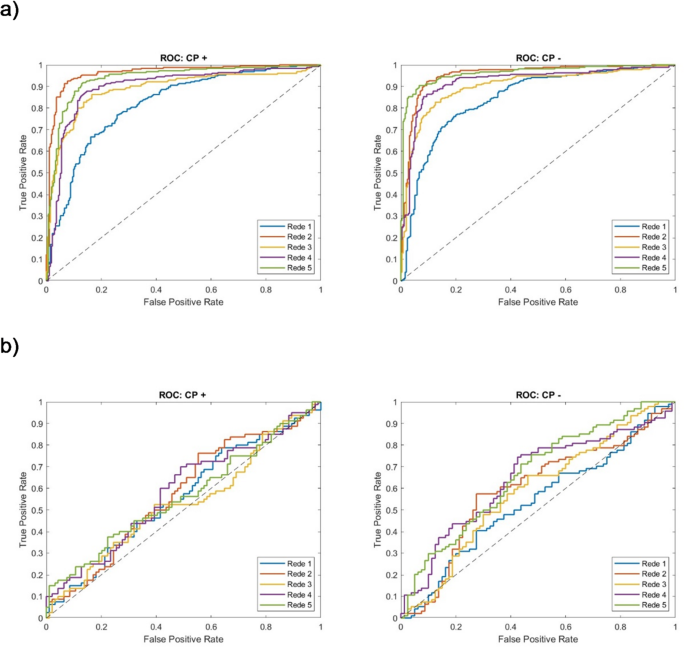
Graham, M. E. et al. Assisted reproductive technology: Short- and long-term outcomes. Dev. Med. Child. Neurol. 65, 38–49 (2023).
Jiang, V. S. & Bormann, C. L. Artificial intelligence in the in vitro fertilization laboratory: a review of advancements over the last decade. Fertil. Steril. 120, 17–23 (2023).
Devine, K. et al. Single vitrified blastocyst transfer maximizes liveborn children per embryo while minimizing preterm birth. Fertil. Steril. 103, 1454–1460 (2015).
Tiitinen, A. Single embryo transfer: why and how to identify the embryo with the best developmental potential. Best Pract. Res. Clin. Endocrinol. Metab. 33, 77–88 (2019).
Glatstein, I., Chavez-Badiola, A. & Curchoe, C. L. New frontiers in embryo selection. J. Assist. Reprod. Genet. 40, 223–234 (2023).
Gardner, D. K. & Schoolcraft, W. B. Culture and transfer of human blastocysts. Curr. Opin. Obstet. Gynaecol. 11, 307–311 (1999).
Sciorio, R. & Meseguer, M. Focus on time-lapse analysis: blastocyst collapse and morphometric assessment as new features of embryo viability. Reprod. BioMed. Online. 43, 821–832 (2021).
Sundvall, L., Ingerslev, H. J., Knudsen, U. B. & Kirkegaard, K. Inter- and intra-observer variability of time-lapse annotations. Hum. Reprod. 28, 3215–3221 (2013).
Gallego, R. D., Remohí, J. & Meseguer, M. Time-lapse imaging: the state of the Art. Biol. Reprod. 101, 1146–1154 (2019).
VerMilyea, M. D. et al. Computer-automated time-lapse analysis results correlate with embryo implantation and clinical pregnancy: a blinded, multi-centre study. Reprod. Biomed. Online. 29, 729–736 (2014).
Chéles, D. S., Molin, E. A. D., Rocha, J. C. & Nogueira, M. F. G. Mining of variables from embryo morphokinetics, blastocyst’s morphology and patient parameters: an approach to predict the live birth in the assisted reproduction service. JBRA Assist. Reprod. 24, 470–479 (2020).
Rocha, C., Nogueira, M. G., Zaninovic, N. & Hickman, C. Is AI assessment of morphokinetic data and digital image analysis from time-lapse culture predictive of implantation potential of human embryos? Fertil. Steril. 110, e373 (2018).
Zaninovic, N. et al. Application of artificial intelligence technology to increase the efficacy of embryo selection and prediction of live birth using human blastocysts cultured in a time-lapse incubator. Fertil. Steril. 110, e372–e373 (2018).
Alegre, L. et al. First application of artificial neuronal networks for human live birth prediction on Geri time-lapse monitoring system blastocyst images. Fertil. Steril. 114, e140 (2020).
Bori, L. et al. An artificial intelligence model based on the proteomic profile of euploid embryos and blastocyst morphology: a preliminary study. Reprod. BioMed. Online. 42, 340–350 (2021).
Chéles, D. S. et al. An image processing protocol to extract variables predictive of human embryo fitness for assisted reproduction. Appl. Sci. 12, 3531 (2022).
Jacobs, C. K. et al. Embryologists versus artificial intelligence: predicting clinical pregnancy out of a transferred embryo who performs it better? Fertil. Steril. 118, e81–e82 (2022).
Lorenzon, A. et al. P-211 development of an artificial intelligence software with consistent laboratory data from a single IVF center: performance of a new interface to predict clinical pregnancy. Hum. Reprod. 39, deae108.581 (2024).
Fernandez, E. I. et al. Artificial intelligence in the IVF laboratory: overview through the application of different types of algorithms for the classification of reproductive data. J. Assist. Reprod. Genet. 37, 2359–2376 (2020).
Mendizabal-Ruiz, G. et al. Computer software (SiD) assisted real-time single sperm selection associated with fertilization and blastocyst formation. Reprod. BioMed. Online. 45, 703–711 (2022).
Fjeldstad, J. et al. Segmentation of mature human oocytes provides interpretable and improved blastocyst outcome predictions by a machine learning model. Sci. Rep. 14, 10569 (2024).
Khosravi, P. et al. Deep learning enables robust assessment and selection of human blastocysts after in vitro fertilization. NPJ Digit. Med. 2, 21 (2019).
Hickman, C. et al. Inner cell mass surface area automatically detected using Chloe eq™(fairtility), an ai-based embryology support tool, is associated with embryo grading, embryo ranking, ploidy and live birth outcome. Fertil. Steril. 118, e79 (2022).
Tran, D., Cooke, S., Illingworth, P. J. & Gardner, D. K. Deep learning as a predictive tool for fetal heart pregnancy following time-lapse incubation and blastocyst transfer. Hum. Reprod. 34, 1011–1018 (2019).
Rajendran, S. et al. Automatic ploidy prediction and quality assessment of human blastocysts using time-lapse imaging. Nat. Commun. 15, 7756 (2024).
Bormann, C. L. et al. Consistency and objectivity of automated embryo assessments using deep neural networks. Fertil. Steril. 113, 781–787e1 (2020).
Kragh, M. F. & Karstoft, H. Embryo selection with artificial intelligence: how to evaluate and compare methods? J. Assist. Reprod. Genet. 38, 1675–1689 (2021).
Cromack, S. C., Lew, A. M., Bazzetta, S. E., Xu, S. & Walter, J. R. The perception of artificial intelligence and infertility care among patients undergoing fertility treatment. J. Assist. Reprod. Genet. https://doi.org/10.1007/s10815-024-03382-5 (2025).
Fröhlich, H. et al. From hype to reality: data science enabling personalized medicine. BMC Med. 16, 150 (2018).
Zhu, J. et al. External validation of a model for selecting day 3 embryos for transfer based upon deep learning and time-lapse imaging. Reprod. BioMed. Online. 47, 103242 (2023).
Yelke, H. K. et al. O-007 Simplifying the complexity of time-lapse decisions with AI: CHLOE (Fairtility) can automatically annotate morphokinetics and predict blastulation (at 30hpi), pregnancy and ongoing clinical pregnancy. Hum. Reprod. 37, deac104.007 (2022).
Papatheodorou, A. et al. Clinical and practical validation of an end-to-end artificial intelligence (AI)-driven fertility management platform in a real-world clinical setting. Reprod. BioMed. Online. 45, e44–e45 (2022).
Salih, M. et al. Embryo selection through artificial intelligence versus embryologists: a systematic review. Hum. Reprod. Open hoad031 (2023).
Nunes, K. et al. Admixture’s impact on Brazilian population evolution and health. Science. 388(6748), eadl3564 (2025).
Jackson-Bey, T. et al. Systematic review of Racial and ethnic disparities in reproductive endocrinology and infertility: where do we stand today? F&S Reviews. 2, 169–188 (2021).
Kassi, L. A. et al. Body mass index, not race, May be associated with an alteration in early embryo morphokinetics during in vitro fertilization. J. Assist. Reprod. Genet. 38, 3091–3098 (2021).
Pena, S. D. J., Bastos-Rodrigues, L., Pimenta, J. R. & Bydlowski, S. P. DNA tests probe the genomic ancestry of Brazilians. Braz J. Med. Biol. Res. 42, 870–876 (2009).
Fraga, A. M. et al. Establishment of a Brazilian line of human embryonic stem cells in defined medium: implications for cell therapy in an ethnically diverse population. Cell. Transpl. 20, 431–440 (2011).
Amin, F. & Mahmoud, M. Confusion matrix in binary classification problems: a step-by-step tutorial. J. Eng. Res. 6, 0–0 (2022).
Magdi, Y. et al. Effect of embryo selection based morphokinetics on IVF/ICSI outcomes: evidence from a systematic review and meta-analysis of randomized controlled trials. Arch. Gynecol. Obstet. 300, 1479–1490 (2019).
Guo, Y. H., Liu, Y., Qi, L., Song, W. Y. & Jin, H. X. Can time-lapse incubation and monitoring be beneficial to assisted reproduction technology outcomes? A randomized controlled trial using day 3 double embryo transfer. Front. Physiol. 12, 794601 (2022).
Giménez, C., Conversa, L., Murria, L. & Meseguer, M. Time-lapse imaging: morphokinetic analysis of in vitro fertilization outcomes. Fertil. Steril. 120, 228–227 (2023).
Vitrolife EmbryoScope + time-lapse system. (2023). https://www.vitrolife.com/products/time-lapse-systems/embryoscopeplus-time-lapse-system/.
Lagalla, C. et al. A quantitative approach to blastocyst quality evaluation: morphometric analysis and related IVF outcomes. J. Assist. Reprod. Genet. 32, 705–712 (2015).
Rocha, J. C. et al. A method based on artificial intelligence to fully automatize the evaluation of bovine blastocyst images. Sci. Rep. 7, 7659 (2017).
Chavez-Badiola, A. et al. Predicting pregnancy test results after embryo transfer by image feature extraction and analysis using machine learning. Sci. Rep. 10, 4394 (2020).
Matos, F. D., Rocha, J. C. & Nogueira, M. F. G. A method using artificial neural networks to morphologically assess mouse blastocyst quality. J. Anim. Sci. Technol. 56, 15 (2014).
Wang, S., Zhou, C., Zhang, D., Chen, L. & Sun, H. A deep learning framework design for automatic blastocyst evaluation with multifocal images. IEEE Access. 9, 18927–18934 (2021).
Berntsen, J., Rimestad, J., Lassen, J. T., Tran, D. & Kragh, M. F. Robust and generalizable embryo selection based on artificial intelligence and time-lapse image sequences. PLoS One. 17, e0262661 (2022).
Fruchter-Goldmeier, Y. et al. An artificial intelligence algorithm for automated blastocyst morphometric parameters demonstrates a positive association with implantation potential. Sci. Rep. 13, 14617 (2023).
Illingworth, P. J. et al. Deep learning versus manual morphology-based embryo selection in IVF: a randomized, double-blind noninferiority trial. Nat. Med. 30, 3114–3120 (2024).
Kanakasabapathy, M. K. et al. Development and evaluation of inexpensive automated deep learning-based imaging systems for embryology. Lab. Chip. 19, 4139–4145 (2019).
Loewke, K. et al. Characterization of an artificial intelligence model for ranking static images of blastocyst stage embryos. Fertil. Steril. 117, 528–535 (2022).
Hengstschläger, M. Artificial intelligence as a door opener for a new era of human reproduction. Hum. Reprod. Open hoad043 (2023).
Lassen Theilgaard, J., Fly Kragh, M., Rimestad, J., Nygård Johansen, M. & Berntsen, J. Development and validation of deep learning based embryo selection across multiple days of transfer. Sci. Rep. 13 (1), 4235 (2023).
Lozano, M. et al. P-301 Assessment of ongoing clinical outcomes prediction of an AI system on retrospective SET data, Human Reprod. 38(Issue Supplement_1), dead093.659. (2023).
Collins, G. S. et al. TRIPOD + AI statement: updated guidance for reporting clinical prediction models that use regression or machine learning methods. BMJ 385, e078378 (2024).
Abdolrasol, M. G. M. et al. Artificial neural networks based optimization techniques: a review. Electronics 10, 2689 (2021).
Yuzer, E. O. & Bozkurt, A. Instant solar irradiation forecasting for solar power plants using different ANN algorithms and network models. Electr. Eng. 106, 3671–3689 (2024).
Guariso, G. & Sangiorgio, M. Improving the performance of multiobjective genetic algorithms: an elitism-based approach. Information 11, 587 (2020).
García-Pascual, C. M. et al. Optimized NGS approach for detection of aneuploidies and mosaicism in PGT-A and imbalances in PGT-SR. Genes 11, 724 (2020).
AI Research
UCLA Researchers Enable Paralyzed Patients to Control Robots with Thoughts Using AI – CHOSUNBIZ – Chosun Biz
-

 Business3 days ago
Business3 days agoThe Guardian view on Trump and the Fed: independence is no substitute for accountability | Editorial
-
Tools & Platforms3 weeks ago
Building Trust in Military AI Starts with Opening the Black Box – War on the Rocks
-

 Ethics & Policy1 month ago
Ethics & Policy1 month agoSDAIA Supports Saudi Arabia’s Leadership in Shaping Global AI Ethics, Policy, and Research – وكالة الأنباء السعودية
-

 Events & Conferences3 months ago
Events & Conferences3 months agoJourney to 1000 models: Scaling Instagram’s recommendation system
-

 Jobs & Careers2 months ago
Jobs & Careers2 months agoMumbai-based Perplexity Alternative Has 60k+ Users Without Funding
-

 Funding & Business2 months ago
Funding & Business2 months agoKayak and Expedia race to build AI travel agents that turn social posts into itineraries
-

 Education2 months ago
Education2 months agoVEX Robotics launches AI-powered classroom robotics system
-

 Podcasts & Talks2 months ago
Podcasts & Talks2 months agoHappy 4th of July! 🎆 Made with Veo 3 in Gemini
-

 Podcasts & Talks2 months ago
Podcasts & Talks2 months agoOpenAI 🤝 @teamganassi
-

 Mergers & Acquisitions2 months ago
Mergers & Acquisitions2 months agoDonald Trump suggests US government review subsidies to Elon Musk’s companies


